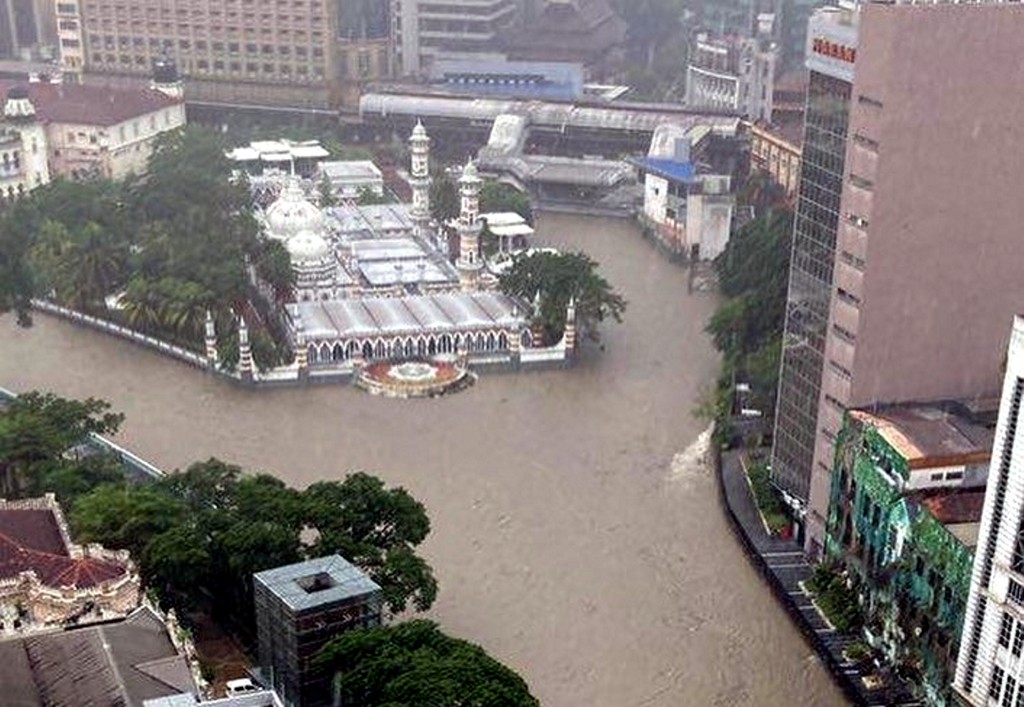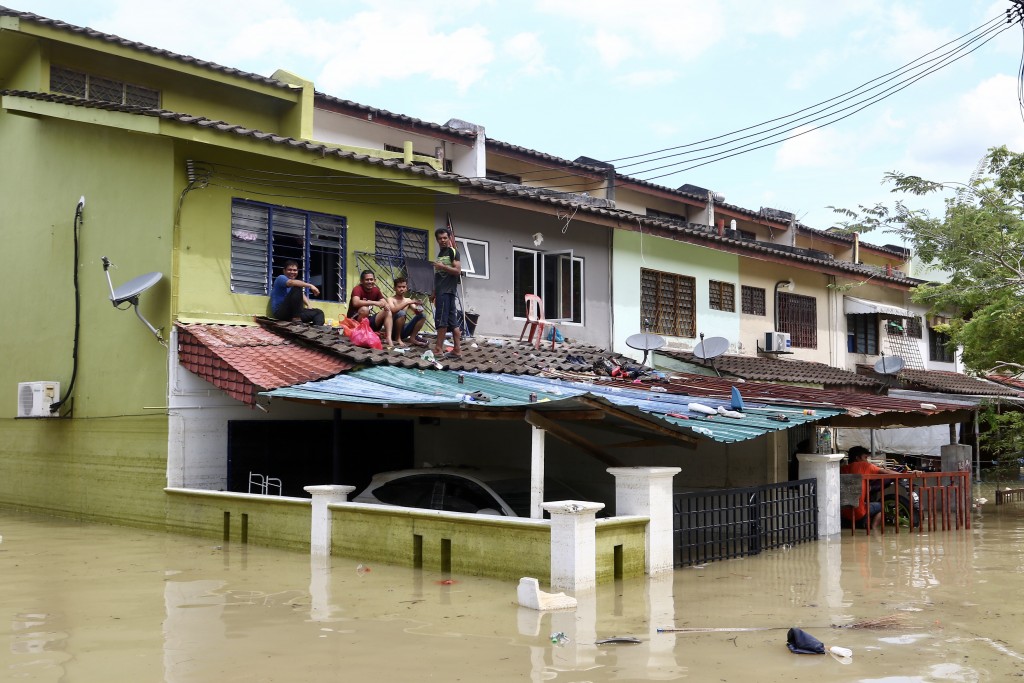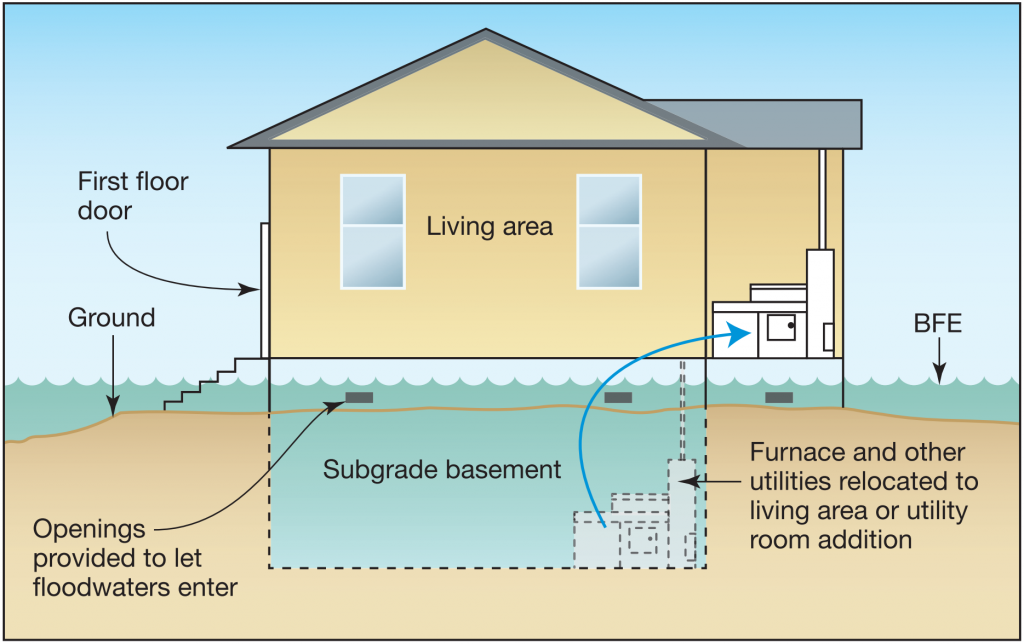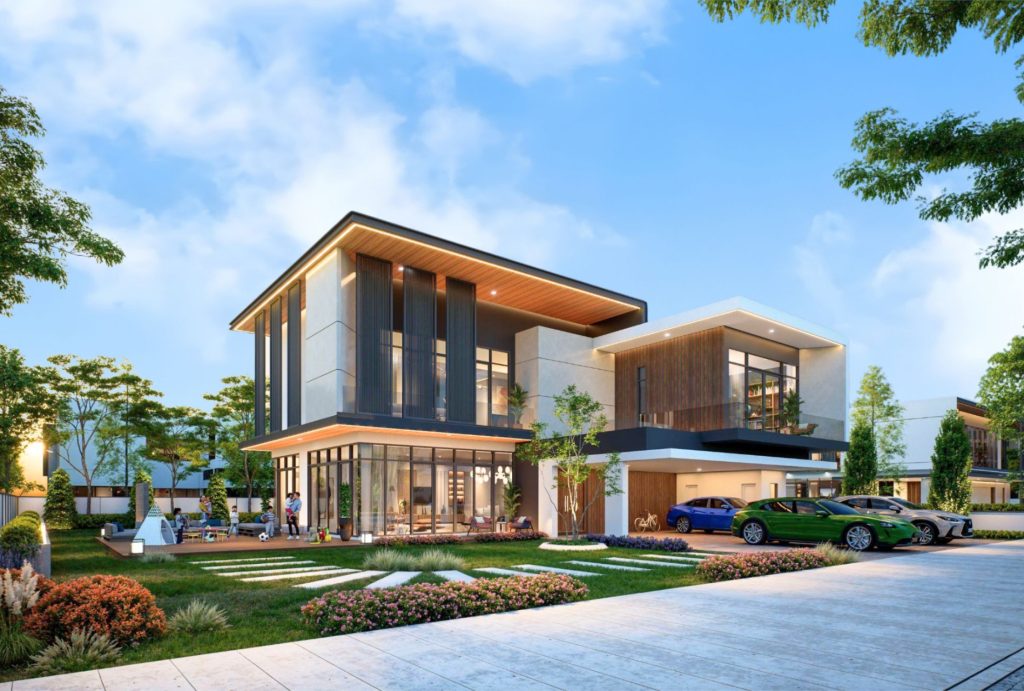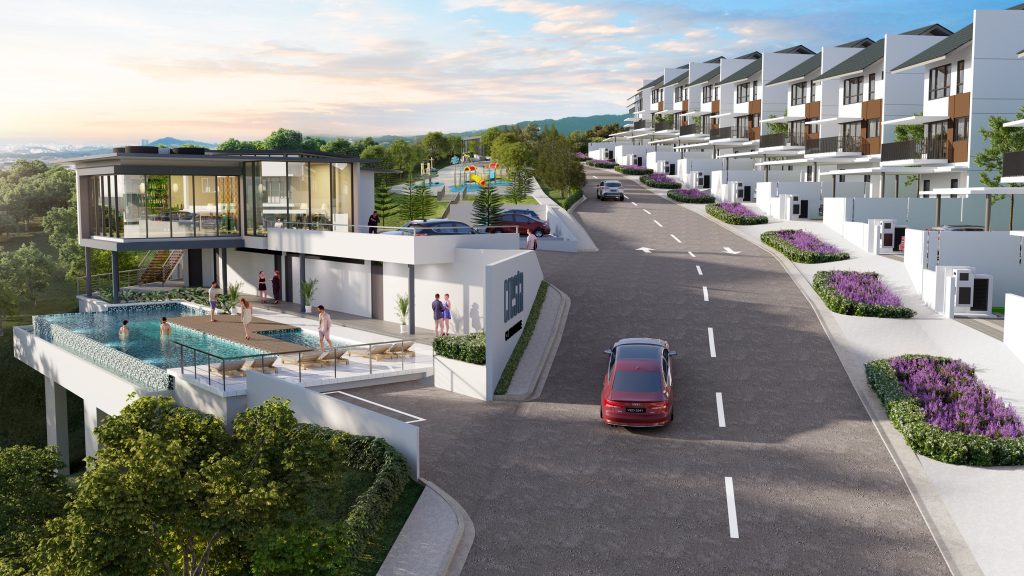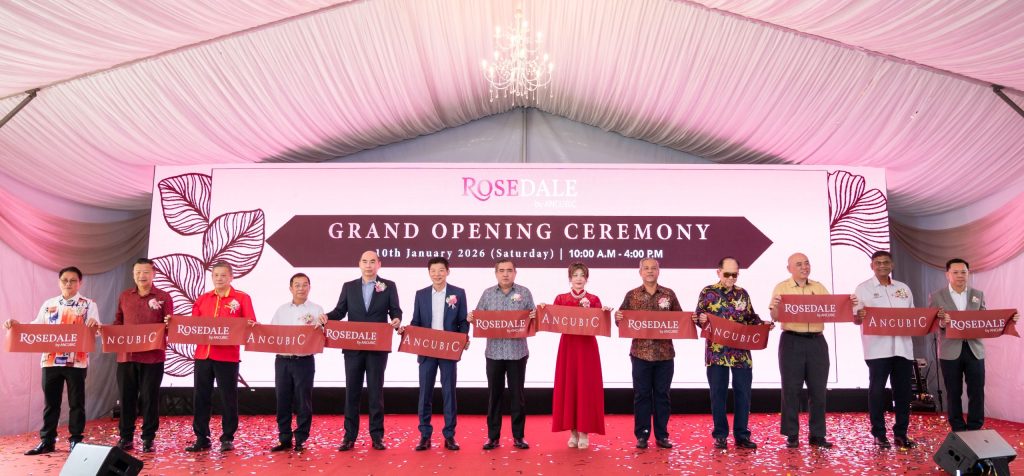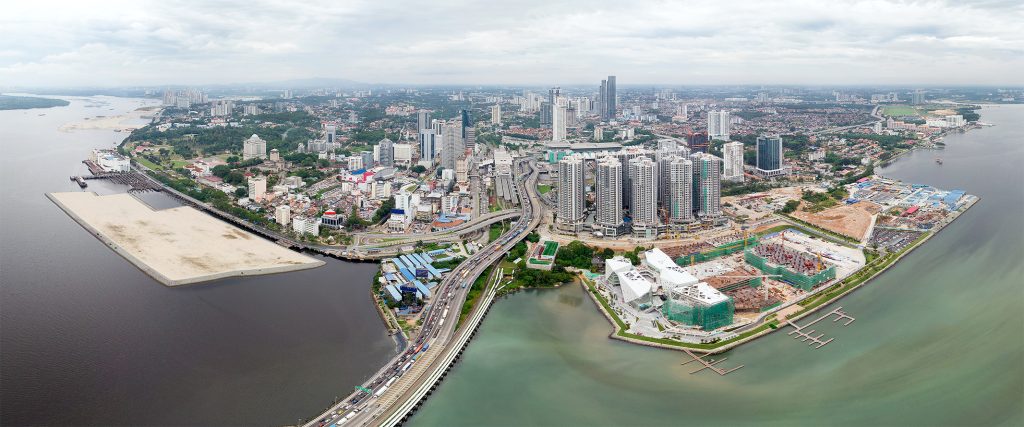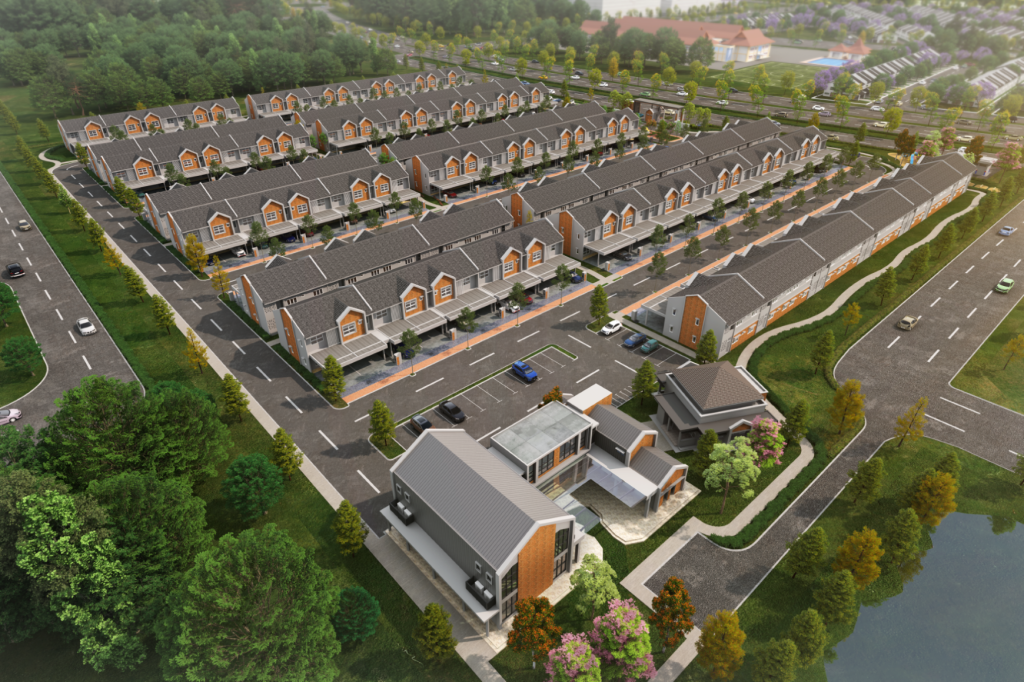Malaysian developers must catch up on flood-proofing homes and cities
By Yanika Liew
Flood-resilient cities seem inevitable as day-to-day operations become increasingly hindered during monsoon season, especially when it comes to Malaysia’s volatile climate. The government’s Flood Mitigation Plan encompasses a total of RM15bil with a timeline that is as far-reaching as 2030. However, as of August 2022, the national auditor-general report found that only 7.7% of Kuala Lumpur City Hall’s (DBKL) measures had been implemented.
Malaysians have built barriers around their home and moved their furniture to higher grounds, with little success. While citizens take personal precautions, what is being done on the side of developers and city planners in charge?
“There are two types of flood events – firstly flash floods driven by increased rainfall in urban areas that are generally in higher elevation in contrast with increased sea-level driven flooding in coastal or low-lying areas,” GreenRE executive director Ashwin Thurairajah said.
The second type is flooding in lower elevation areas due to rising sea levels as a consequence of global warming.
GreenRE (Green Real Estate) is the Malaysian-recognised green building certification body, with processes that are in line with United Nations Sustainable Development Goals (SDGs) and World Green Building Council.
While some developers have begun to provide flood insurance plans, encouraging families to put money into asset protection, these methods only place the responsibility of managing the flood on the people rather than those in charge. It also acts as a post-incident measure rather than a preventative one.
With developers constantly speaking on sustainable development, flood-proofing townships and projects as well as implementing their own mitigation strategies should also be on the list.
Thurairajah pointed out that developers are compelled by local authorities to mitigate flash floods as part of planning approval for any new development through adherence to the Urban Stormwater Management Manual (MSMA) guidelines.
“MSMA guidance is based on the concept of developing sponge-like urban surroundings, amenities and infrastructure, an approach that is effective in higher elevation urban areas,” he said.
Vegetation and greenery as softscape
Sponge-like urban surroundings refer to softscape elements, which consist of water bodies and plant life. These elements allow for a more resilient and sustainable flood management system. For example, studies have found that features such as constructed wetlands and nature parks can act as a basin for stormwater runoff and flood storage. Bioswales, which are trenches covered in grass, plants, flowers and soil, can also slow down storm water runoff.
“Flooding in lower elevation or coastal areas is more complex as the effort for mitigation is skewed more towards central planning authorities. Improved flood detection and risk assessment are critical,” Thurairajah said.
“Flood prevention is primarily achieved by keeping people away from water in high-risk zones by not allowing development in flood-prone areas and moving existing occupants away. In low to medium risk zones, flood defence strategies should be applied such as increasing bunker heights around rivers and the sea, improving data collection to better estimate probability of flooding events and mandating stricter flood resilience building design codes for new and existing developments,” he added.
The downside to these guidelines is that they are not mandatory and only apply to those who are pursuing a GreenRE certification. This certification includes requirements for both building and township assessment to have increased softscape in surrounding areas to absorb water versus hardscape that runs water off to stormwater drainage systems. In townships, green and blue scapes are highly encouraged and the general rule is green or blue space of 800m in size within 400m of every occupant.
Thurairajah noted that for high flood risk areas, the government should improve flood risk assessment, early warning systems and disaster response capabilities. There should be a community-level awareness and responsibility for maintaining the cleanliness of stormwater drains, restoring and protecting ecosystems and adding green spaces.
For RSP Architects Kuala Lumpur principal and director Hud Bakar, floods in the city must be looked at from a macro point at a masterplan and infrastructure level. Flood and water levels have to be studied thoroughly and carefully to avoid damages.
“The drainage system has to be planned in a more efficient way. For houses, the platform level of each unit is crucial in determining risks. Raise the platform if need be, before designing the house,” Hud said.
Source: Federal Emergency Management Agency (FEMA)
Flood-proof designs of houses include elements such as flood vents. With floods, the rush of water can often cause walls to collapse due to the immense hydrostatic pressure. Flood vents allow water into the other side of the wall, balancing the water both internally and externally.
The premise is similar to the traditional Malay stilt houses and can be seen in houses that have been built on top of the sea, allowing water to pass through underneath. In terms of architecture, Hud pointed out that traditional Malay houses with stilts are still effective today in rural areas, however, might not be considered practical in urban areas.
Allowing the flood to enter specific areas of the building is an example of wet floodproofing, while dry floodproofing attempts to fully seal the exterior of the house, making it watertight. The landscapes, environment and house types have to be considered when looking at the differing types of floodproofing. Common issues like water coming into the home through pipes and drains are design flaws of the home.
“With proper stormwater and drainage systems and at the right design platform level, there should not be any water coming through. Of course, there are mechanical solution systems like valves, pumps or by using tanks but they are costly and require high maintenance and energy usage,” Hud said.
“It is always best to design it the natural way by abiding to the principles,” he added.
According to Hud, closed drainage systems prevent people from throwing rubbish directly into the drain, which hinders water flow, creates a more sanitary environment as well as more pleasing to the eye, even while open drainage systems are preferred by most authorities due to their cheaper cost and direct water access.
When it comes to apartment buildings, the issue of flooding extends to basement car parks, which are generally lower than the external level. However, there are certain design elements which can be incorporated to mitigate the damaging risks.
Hud listed examples such as floodgates, water stops or even a raised barrier at the basement car park entrance. In addition to that, a proper roof to cover the basement car park entrance may prevent direct rainfall to minimise the risk.

When it comes to flood aid, most measures include short-term solutions that occur after the wake of the incident.
Rethinking flash floods
“Currently, local councils do not check for sea level rise risks when approving housing developments. On the other hand, flash flood risks are often regarded as a localised incident instead of a systemic problem of the urban system that can be mitigated with engineering solutions,” Urbanmetry founder and chief executive officer Cha-Ly Koh said.
As a property data company that analyses data on a city-wide scale, Urbanmetry specialises in keeping track of city planning trends and practices through the use of algorithms and artificial intelligence (AI).
Her comment pointed to a flaw in the system of the housing development process. While the issue of flood mitigation cannot be solved by developers alone, they are significant stakeholders as actors in the built environment and solving the problem requires their input as much as government agencies.
“Developers should check if development locations are susceptible to both flood risks before commencement. If they are subjected to sea level rise, backfilling and raising of ground level should be considered. If the location is susceptible to flash flood risks, a systemic hydrological solution should be considered that goes beyond their development land,” Koh said.
When it comes to new housing projects, developers are provided with the Environmental Impact Assessment (EIA), a mandatory framework for developments.
The Construction Industry Development Board (CIDB) and its subsidiary Construction Research Institute Malaysia (CREAM) have also produced the Guidelines for Flood Risk Vulnerability Index (FVI) for Critical Infrastructure (CI) in Malaysia.
These guidelines are meant for local authorities, developers, consultants, planners and project owners, allowing them to create FVI maps to ensure proper mitigation plans when building critical infrastructures, such as schools, bridges and residential areas.
“These guidelines are there to be used in tandem with existing development EIA requirements, however, it is on a voluntary basis and not a mandated requirement,” CIDB general manager Mohammed Farid Hamid said.
CIDB has conducted training for more than 60 out of 150 local authorities in places that are more prone to flooding, on how to prepare the FVI maps according to these guidelines. The FVI maps for the local authorities are much larger than the maps recommended for Developers and Consultants, hence Farid encourages the principal submitting persons to participate in the learning, to be able to prepare more precise and smaller FVI maps for their area of development.
“The key here is the Critical Infrastructures, we are encouraging the use of the guidelines to ensure that developers identify FVI so that they can take mitigating measures to ensure CI are not exposed or prone to flooding,” Farid said.
“If the FVI map shows the CI will be exposed to flood, perhaps the mitigation is to raise the land above the FV line and then build the CI,” he added.
Local councils have to start treating their cities as dynamic systems versus a static infrastructure, Koh pointed out.
While homes can be designed to protect assets and belongings from temporary flooding damage, rising sea levels and groundwater is permanent.
“Flood mitigation contracts by themselves are at best temporary solutions to the permanent flood problems we will face. The floods we will face in the next decade require a longer term policy and infrastructure planning solution that goes beyond building another drain,” she added.
When it comes to flood aid, most measures include short-term solutions that occur after the wake of the incident, for example, the Malaysian Family Flood Aid. However, changes to the infrastructure will not only be safer, but also less costly for the families affected in the long run.
In Brisbane, Australia, a city-funded program to make homes more flood resilient has seen rousing success. Australia is similarly impacted by both flash floods and heavy flooding in certain parts of the country, and the program provides a free assessment of flood-risk homes, and citizens are given a grant to renovate their homes with more resilient designs, such as placing water tanks and heaters above flood level and installing stronger doors.
These initiatives are solutions to a larger systemic problem in our increasingly flood-prone nation. As more developers call for more sustainability, perhaps we will also see them walk the talk when it comes to more flood-resilient housing designs.

Flood mitigation contracts by themselves are at best temporary solutions to the permanent flood problems we will face, Koh said.
Stay ahead of the crowd and enjoy fresh insights on real estate, property development, and lifestyle trends when you subscribe to our newsletter and follow us on social media.

